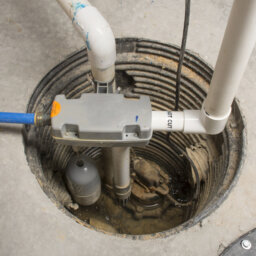
Is a Personal Articles Floater Right for You?
One of the biggest reasons to purchase home insurance is to provide peace of mind in the event that the unforeseen occurs. But, did you know that some of your high-value personal property might not be adequately covered?
In this article, I’ll look at personal articles floaters, why they might be a good idea, how much they can cost, and how you can figure out if you should purchase one. First, let’s quickly cover the basics.
How Does a Personal Articles Floater (PAF) Policy Work?
Under typical circumstances, your homeowner’s policy covers most of your personal property—clothing, furniture, electronics, etc.—against causes of loss like fire, theft, windstorm, and so forth.
Related: 10 Questions to Ask Before Buying Home Insurance
However, there are several personal property classes that either aren’t covered at all or are covered but come with limits regarding what the company will pay in the event of a loss. This is where a personal articles floater (PAF) enters the picture, which extends coverage for certain property classes beyond what’s offered by the underlying homeowner’s policy.
In other words, a PAF “floats” over your homeowner’s policy and extends coverage for listed personal property. Standard classes insured under a PAF include:
- Jewelry – Watches, engagement and wedding rings
- Fine Art – Paintings, statues, rugs, vintage and antique furniture, rare books and manuscripts, glasses, ornamental knickknacks
- Furs – Any garments containing or trimmed with (even imitation) fur
- Cameras and Video Equipment – Cameras and other equipment used in motion picture recording, along with projection machines, binoculars, and even telescopes
- Computers and Electronics
- Musical Instruments – Personal instruments, including sound and amplifying equipment
- Sporting Equipment – Bicycles, golfing equipment (including the insured’s golf clothes), archery, camping, fishing, skiing gear, etc.
- Stamps and Coin Collections – Valuable stamps and coin collections
- Silverware, Goldware, and China – Including crystal
- Firearms – Guns and related equipment
- Wedding Gifts
- Political Campaign Collections – Buttons, flyers, etc.
- Medical-Related Items – Hearing aids, prosthetics, wheelchairs, and other personal mobility devices
- Pedigreed Dogs
What Coverage is Provided Under a Personal Articles Floater?
From a perils perspective, a personal articles floater covers personal property on an all-risk basis, which means that unless a cause of loss is expressly excluded in the policy language, it’s covered. Consequently, perils like earthquake, flood, and breakage (fine arts) are included.
On the other hand, typical PAF exclusions include:
- Wear and tear
- Deterioration
- Inherent vice
- Loss caused by insects or vermin
Depending on the company and the class of property, a PAF can provide coverage on a replacement cost basis (what it costs to replace with like-kind and quality based on current market value), or a stated value (up to the limit listed on the policy) basis. Often, carriers offer extended replacement cost coverage that provides up to 150% reimbursement for eligible classes of personal property.
Besides fine arts, many personal property classes under a PAF are covered anywhere in the world, with no deductible unless explicitly stated.
How Much Does a Personal Articles Floater Policy Cost?
Like any other type of insurance, what a personal articles floater costs primarily depends on the classes of property you need to insure, their values, as well as where you live.
With this said, most carriers charge a set rate per $100 or $1,000 or of coverage. So, as perhaps an overly simplistic example, if you insured $10K worth of jewelry at $1 per $100 and $10K of fine arts at $1.50 per $100, you’d have a total premium of $250.
Jewelry: $100 + Fine Arts: $150 = $250 Total Annual Premium
Some carriers allow you to reduce the rates for certain classes of property, like jewelry and fine arts, if they’re store inside a vault the majority of the time.
Will You Need to Submit Paperwork with Your Personal Articles Floater?
As with other aspects of a PAF, whether or not you’ll need to submit paperwork along with your application depends on the carrier, the class of property, and the total limit.
In some instances, a company might require that you include a schedule, which is a detailed description of the item, along with an appraisal, purchase receipt, and other relevant documentation.
How Can You Decide If You Need a Personal Articles Floater Policy?
Deciding to purchase a PAF primarily comes down to the types of personal property you own, their values, and whether or not they’re adequately covered under your homeowner’s policy.
You can also ask yourself, “If something happened to this item, could I replace it quickly and comfortably?” If the answer is “no,” you should consider a personal articles floater.
When speaking with your IHS agent, make sure that you have a list of your valuables handy, in addition to receipts, photos, appraisals, videos, or other relevant documentation.
Pro Tip: In general, it’s recommended that you store these essential documents in an offsite location, such as a safety deposit box.
IHS Insurance Group: Your Personal Articles Floater Resource
After contacting us, we’ll help you choose the best personal articles floater for your needs, whether as an endorsement to your existing homeowner’s policy or as a standalone policy. If you have any questions or concerns along the way, our decades of combined experience can provide actionable answers!
Need a FREE Quote or have questions regarding a Personal Articles Floater? We have three convenient ways to reach us:
- If you prefer to talk to a licensed agent directly, please call (866) 480 5063.
- If you prefer to fill out a quick form and have an agent get back with you at your convenience, use the GET A FREE QUOTE.
- Lastly, for those that want an immediate quote, please click HERE.
We look forward to speaking with you today!















